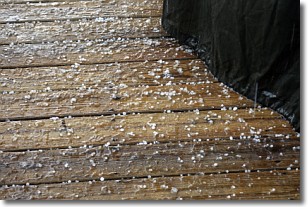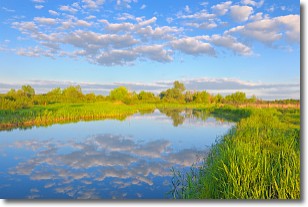Weather Alert in Oklahoma
Flood Warning issued April 30 at 1:51AM CDT until May 2 at 10:25PM CDT by NWS Norman OK
AREAS AFFECTED: Carter, OK; Johnston, OK; Murray, OK
DESCRIPTION: ...The Flood Warning is extended for the following rivers in Oklahoma... Washita River near Dickson affecting Murray, Johnston and Carter Counties. * WHAT...Major flooding is forecast. * WHERE...Washita River near Dickson. * WHEN...From this evening to late Friday evening. * IMPACTS...At 34.0 feet, Flood depths up to 9 feet inundate areas along the Washita River... from near Davis in Murray County... to near Dickson in Carter County... to the headwaters of Lake Texoma in Johnston County. About 7 thousand acres of agricultural lands are covered. Any flooding on tributary creeks is increased by backwater from the Washita River. * ADDITIONAL DETAILS... - At 1:30 AM CDT Wednesday the stage was 16.4 feet. - Bankfull stage is 25.0 feet. - Forecast...The Washita River is expected to rise above flood stage this evening to a crest of 34.5 feet tomorrow evening. It will then fall below flood stage Friday afternoon. - Flood stage is 27.0 feet. - Flood History...This crest compares to a previous crest of 34.6 feet on 05/26/2015. - http://www.weather.gov/safety/flood
INSTRUCTION: Stay tuned to further developments by listening to your local radio, television, or NOAA Weather Radio for further information. Turn around, don't drown when encountering flooded roads. Most flood deaths occur in vehicles. Additional information is available at www.weather.gov.
Want more detail? Get the Complete 7 Day and Night Detailed Forecast!
Current U.S. National Radar--Current
The Current National Weather Radar is shown below with a UTC Time (subtract 5 hours from UTC to get Eastern Time).

National Weather Forecast--Current
The Current National Weather Forecast and National Weather Map are shown below.

National Weather Forecast for Tomorrow
Tomorrow National Weather Forecast and Tomorrow National Weather Map are show below.

North America Water Vapor (Moisture)
This map shows recent moisture content over North America. Bright and colored areas show high moisture (ie, clouds); brown indicates very little moisture present; black indicates no moisture.

Weather Topic: What is Sleet?
Home - Education - Precipitation - Sleet
 Next Topic: Snow
Next Topic: Snow
Sleet is a form of precipitation in which small ice pellets are the primary
components. These ice pellets are smaller and more translucent than hailstones,
and harder than graupel. Sleet is caused by specific atmospheric conditions and
therefore typically doesn't last for extended periods of time.
The condition which leads to sleet formation requires a warmer body of air to be
wedged in between two sub-freezing bodies of air. When snow falls through a warmer
layer of air it melts, and as it falls through the next sub-freezing body of air
it freezes again, forming ice pellets known as sleet. In some cases, water
droplets don't have time to freeze before reaching the surface and the result is
freezing rain.
Next Topic: Snow
Weather Topic: What are Stratocumulus Clouds?
Home - Education - Cloud Types - Stratocumulus Clouds
 Next Topic: Stratus Clouds
Next Topic: Stratus Clouds
Stratocumulus clouds are similar to altocumulus clouds in their
fluffy appearance, but have a slightly darker shade due to their additional mass.
A good way to distinguish the two cloud types is to hold your hand out and measure
the size of an individual cloud; if it is the size of your thumb it is generally
an altocumulus cloud, if it is the size of your hand it is generally a
stratocumulus cloud.
It is uncommon for stratocumulus clouds to produce precipitation, but if they do
it is usually a light rain or snow.
Next Topic: Stratus Clouds
Current conditions powered by WeatherAPI.com




